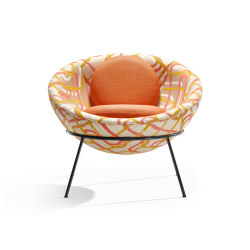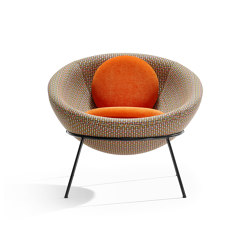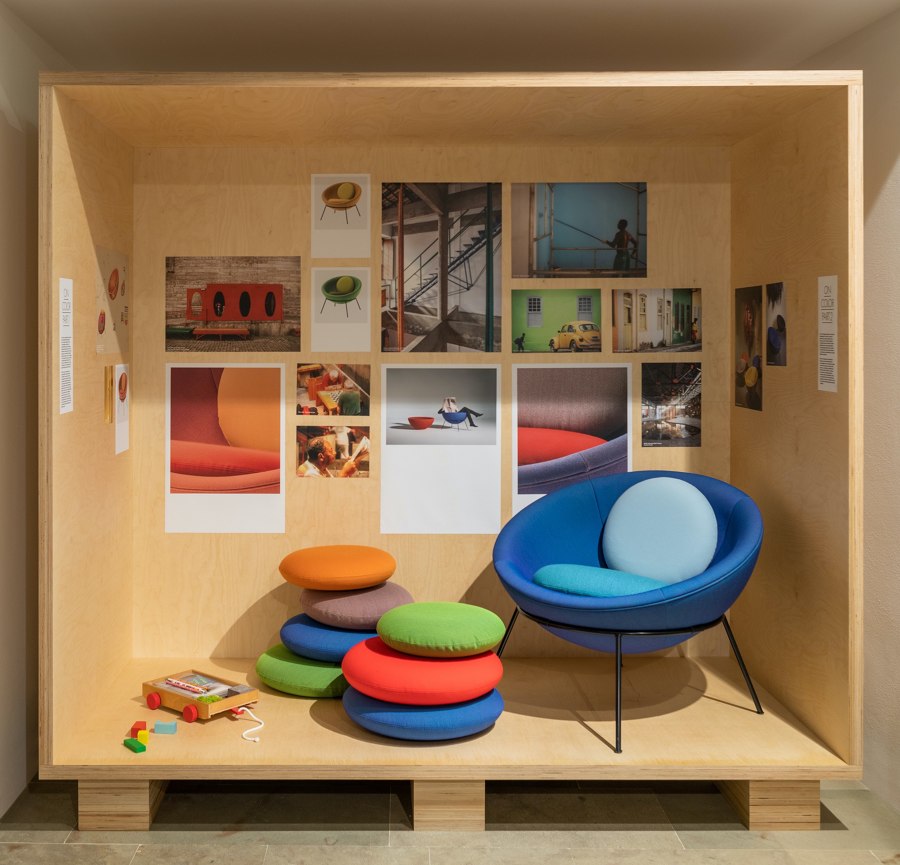Arper: Lina Bo Bardi in Full Colour
Storia del Marchio di Emma Moore
Monastier di Treviso, Italia
02.11.21
Originally designed in 1951 and first realised by Arper in 2012, Lina Bo Bardi's Bowl Chair is back – in striking new colours and patterns that honour the designer's dual heritage...
To celebrate Lina Bo Bardi’s Venice Biennale Golden Lifetime Achievement Award, Arper teamed up with Venice fabric House Rubelli to offer two further upholsteries that underscore the chair’s dual nationality. © Macofilm
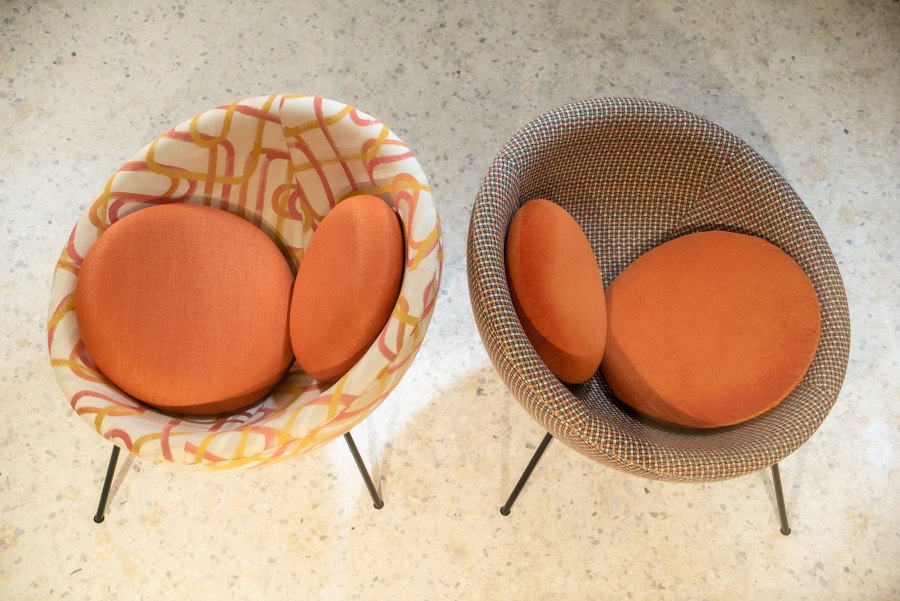
To celebrate Lina Bo Bardi’s Venice Biennale Golden Lifetime Achievement Award, Arper teamed up with Venice fabric House Rubelli to offer two further upholsteries that underscore the chair’s dual nationality. © Macofilm
×Though nearly half a century separates their entry into the world of design, Brazilian architectural icon Lina Bo Bardi and Italian design house Arper have, in recent years, become happy cohorts. While Bo Bardi became known for a bold, expressive modernism developed in 1950s Sao Paulo, her style was rooted in a resolutely rationalist grounding gained from her Italian upbringing and apprenticeships in Milan through the 1940s. Arper meanwhile was born in the dying days of the 1980s, and developed a design language that synthesised form and functionality, colour and warmth. Walk into Arper’s Milan showroom today and you will be greeted by an exhibition celebrating all that unites the two: namely, colour, collaboration and Bo Bardi’s 1951 era-defining Bowl chair which Arper issued for the first time in 2012. 'Lina Bo Bardi in Full Color' launched during Milan Design Week.
The “Lina Bo Bardi in Full Color” exhibition explores the colour journeys the Bowl chair has been on with different contributors. It is installed in Arper’s new pop-up space in via Pantano. © Giulio Ghirardi

The “Lina Bo Bardi in Full Color” exhibition explores the colour journeys the Bowl chair has been on with different contributors. It is installed in Arper’s new pop-up space in via Pantano. © Giulio Ghirardi
×The original partnership between Arper and the Instituto Bardi | Casa de Vidro began with a cultural hook up in 2012. Curator Noemí Blager sought out Arper to help realise an exhibition dedicated to the Italian-Brazilian architect and the sort of social and artistic connectivity her approach inspired. ‘It was a decision that fitted immediately with our deeply felt values,’ says Claudio Feltrin, Arper’s President and CEO, in a forward to the book that documents 'Together', the exhibition that resulted. ‘As it is for us, the core of Lina’s projects lay in people, in the variety and diversity, and in their need to form relationships. The human is at the centre at all times.’
Lina Bo Bardi: Together was an exhibition that travelled worldwide between 2013 and 2016. The Bowl chair was first edited as part of this colourful celebration of the designer’s work and inspirations
Indeed, when Bo Bardi arrived in Brazil in 1946, she had been working for Domus and was quick to launch her own art magazine, Habitat. The title sums up her approach to interior design – as developing a ‘habitat’ in which to nurture human potential. Blager’s exhibition was to celebrate this humanistic approach, and the characteristic absence of ego in her design process. ‘She brought together different social backgrounds and different ages from very different disciplines when she designed her projects,’ says Blager.
Arper balanced the interpreting of the original design with modern manufacturing advancements so that the vision of the artisanal original was met, but the design is better suited industrial production. © Andrea Alessio | Varianti
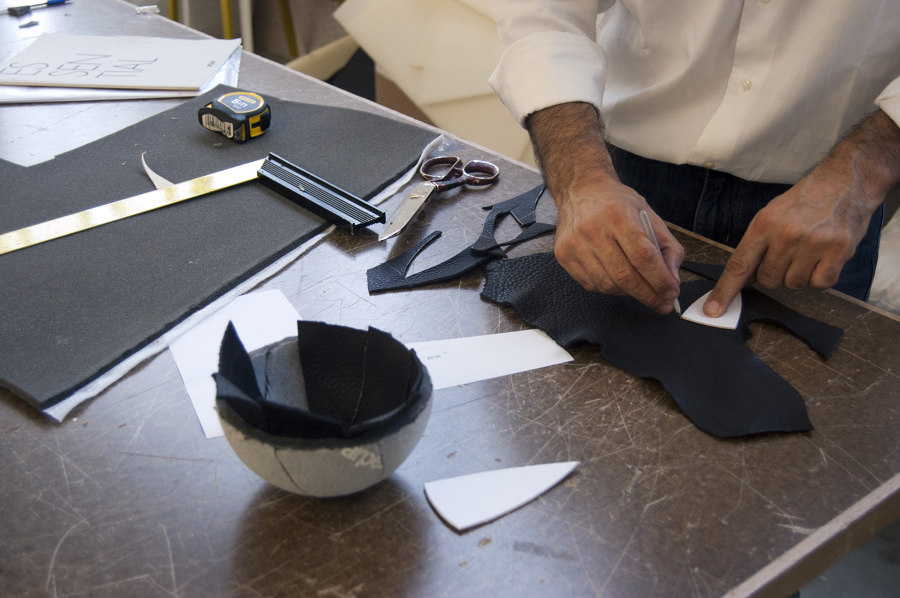
Arper balanced the interpreting of the original design with modern manufacturing advancements so that the vision of the artisanal original was met, but the design is better suited industrial production. © Andrea Alessio | Varianti
×The exhibition 'Lina Bo Bardi: Together' was conceived as a one-off show at the British Council Gallery in London but was restyled for a further eleven cities across Europe and the Americas between 2013-16, responding each time to the local site and taking in additional local flavour. Not long after getting involved, Arper was inspired to manufacture the Bardi's Bowl chair as an edition of 500 alongside the project.
The Bowl Chair has a simple semi-spherical shape and can tilt into different positions. Arper had Bo Bardi’s technical drawings and watercolour sketches to assist in its industrialisation. © Courtesy of Instituto Lina Bo
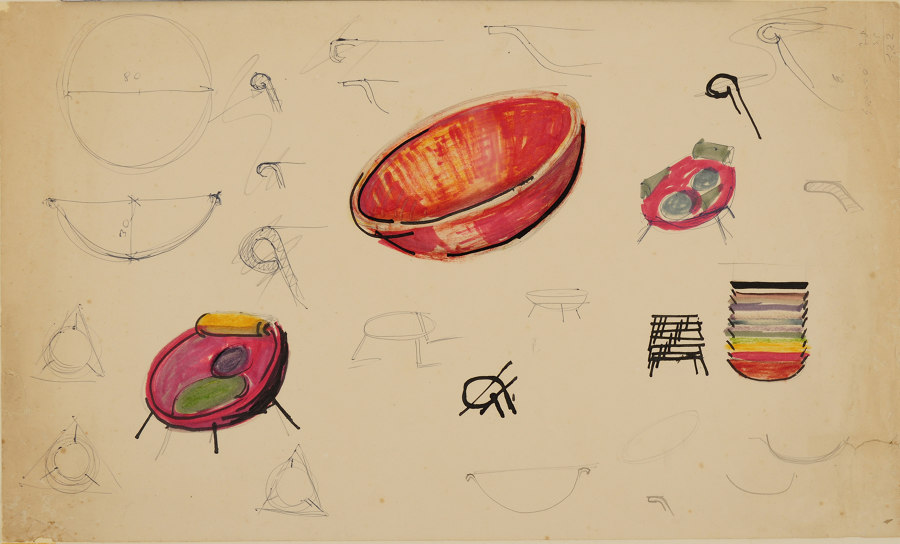
The Bowl Chair has a simple semi-spherical shape and can tilt into different positions. Arper had Bo Bardi’s technical drawings and watercolour sketches to assist in its industrialisation. © Courtesy of Instituto Lina Bo
×Colour was of paramount importance in the equation. Key to the designer’s work, bold colour often became a strong accent amid more brutalist palettes. No specific shades, however, had been assigned to this particular project, so in the Bo Bardi spirit of research and collaboration, a range of colours and portfolio of patterns have developed. For the original outing, the designer Jeannette Altherr interpreted colours used in Bo Bardi’s watercolour sketches of the chair, while Brazilian-born textile artist Dani Moura joined Susan Sellers of 2x4 design consultancy to realise the sketches’ graphic cushion patterns.
Curated by Noemi Blager, Lina Bo Bardi: Together features film installations by Tapio Snellman, a collection of sculptures by the artist Madelon Vriesendorp, and display furniture by Assemble Studio. © Matti Östling, Ioana Marinescu
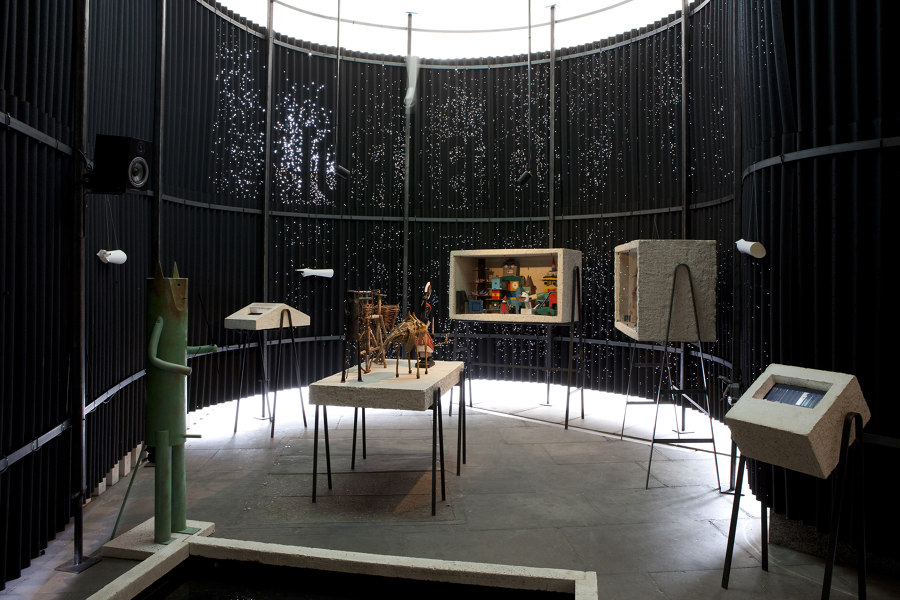
Curated by Noemi Blager, Lina Bo Bardi: Together features film installations by Tapio Snellman, a collection of sculptures by the artist Madelon Vriesendorp, and display furniture by Assemble Studio. © Matti Östling, Ioana Marinescu
×Designed in 1951, the chair had never been produced. The journey was testing – not least because the only prototype in the possession of the Instituto Bardi | Casa De Vidro couldn’t be released, so the design was interpreted remotely. Arper drew all the technical data needed to create construction drawings from the Instituto, while the latter painstakingly communicated the physical qualities and proportions – the thickness, firmness and softness, for example, and the dimensions of the original in relation to the hands and the body.
The chair is shown here in its natural habitat, Bo Bardi’s landmark house design, Casa de Vidro, in Sao Paolo. In leather, the chair takes on a different aura, easing into the tropical modern setting. © Courtesy of Instituto Lina Bo
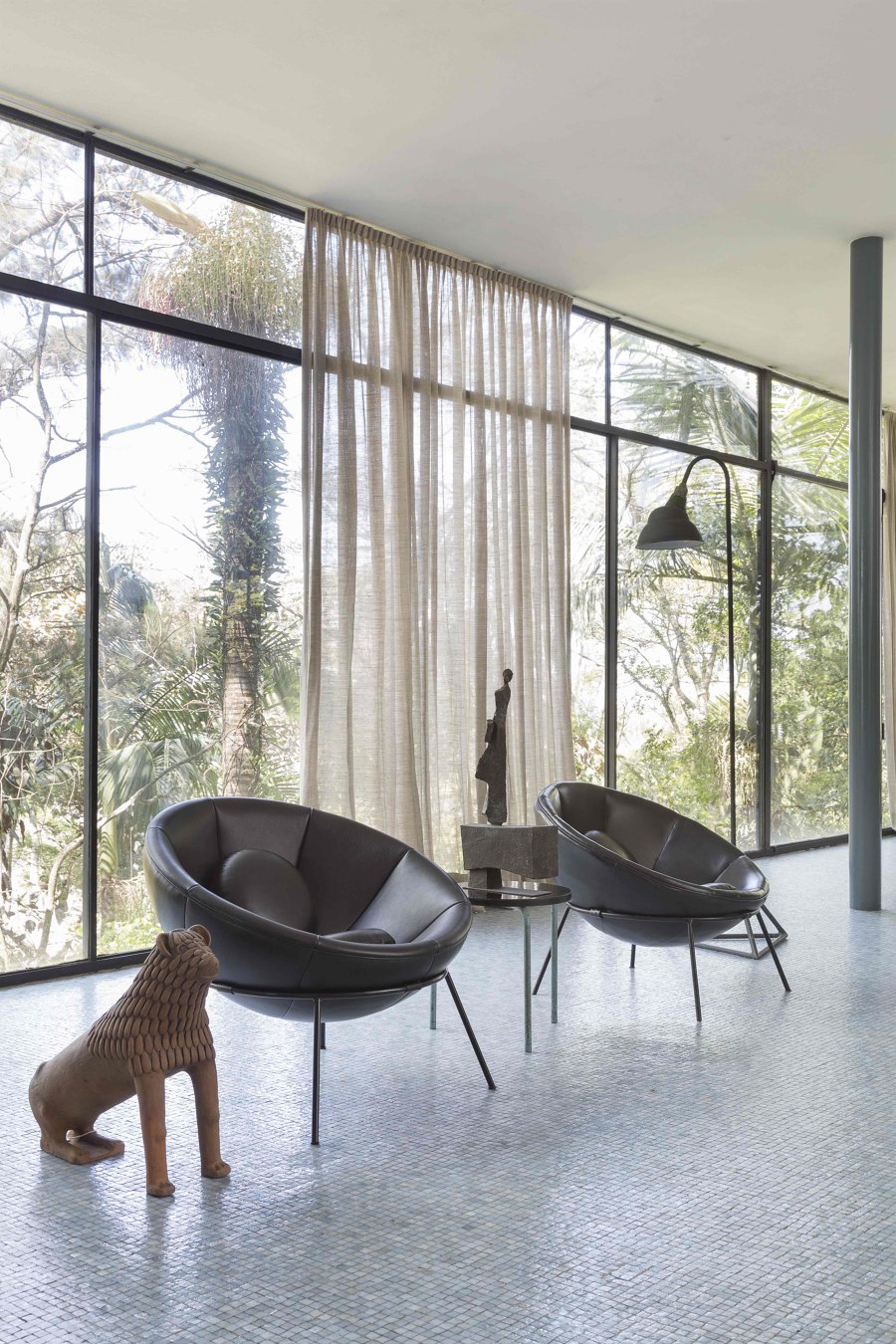
The chair is shown here in its natural habitat, Bo Bardi’s landmark house design, Casa de Vidro, in Sao Paolo. In leather, the chair takes on a different aura, easing into the tropical modern setting. © Courtesy of Instituto Lina Bo
×The chair’s colour adventure is explored in the current show in Milan, which also incorporates elements of the 'Lina Bo Bardi: Together' exhibition. The journey is brought up to date with the newest iterations of the Bowl , a collaboration with Venetian fabric house, Rubelli. They celebrate Lina Bo Bardi’s Golden Lion Lifetime Achievement Award, bestowed in memoriam during this year’s Venice Biennale. Two expressive designs were chosen to fit the essence of the Bowl project and make the liaison between Brazil and Italy, the two nations that gave Bo Bardi her identity.
Designed in 1951, the Bowl Chair was first edited by Arper in 2012, from drawings and prototypes. A fusion of bold colour, pattern and shape nods to both the Brazilian and the Italian heritage of its designer
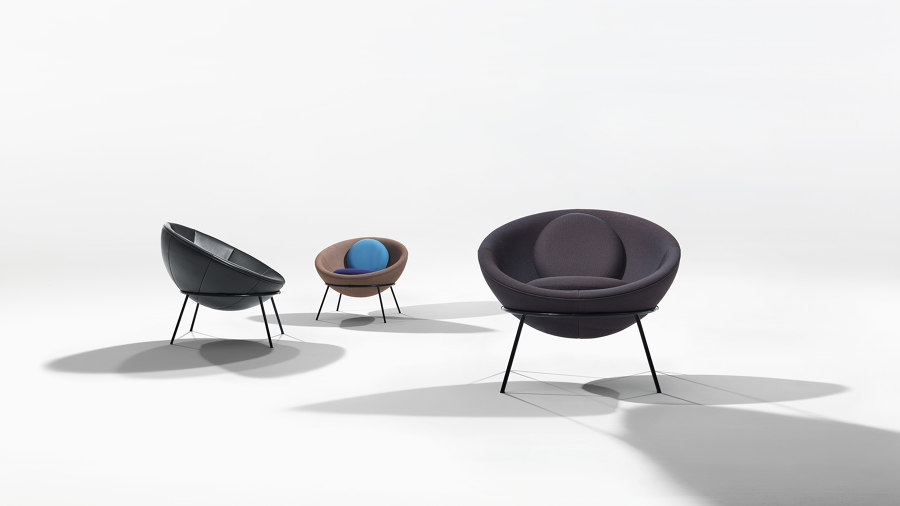
Designed in 1951, the Bowl Chair was first edited by Arper in 2012, from drawings and prototypes. A fusion of bold colour, pattern and shape nods to both the Brazilian and the Italian heritage of its designer
×There’s something thoroughly modern and joyous in the colourful cultural collaging Bo Bardi employed in her work and which is celebrated in this latest exhibition. And exposing the points where we meet as nations rather than where we divide is something that is very welcome today.
© Architonic


